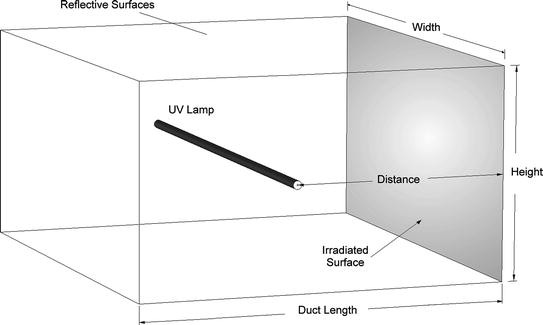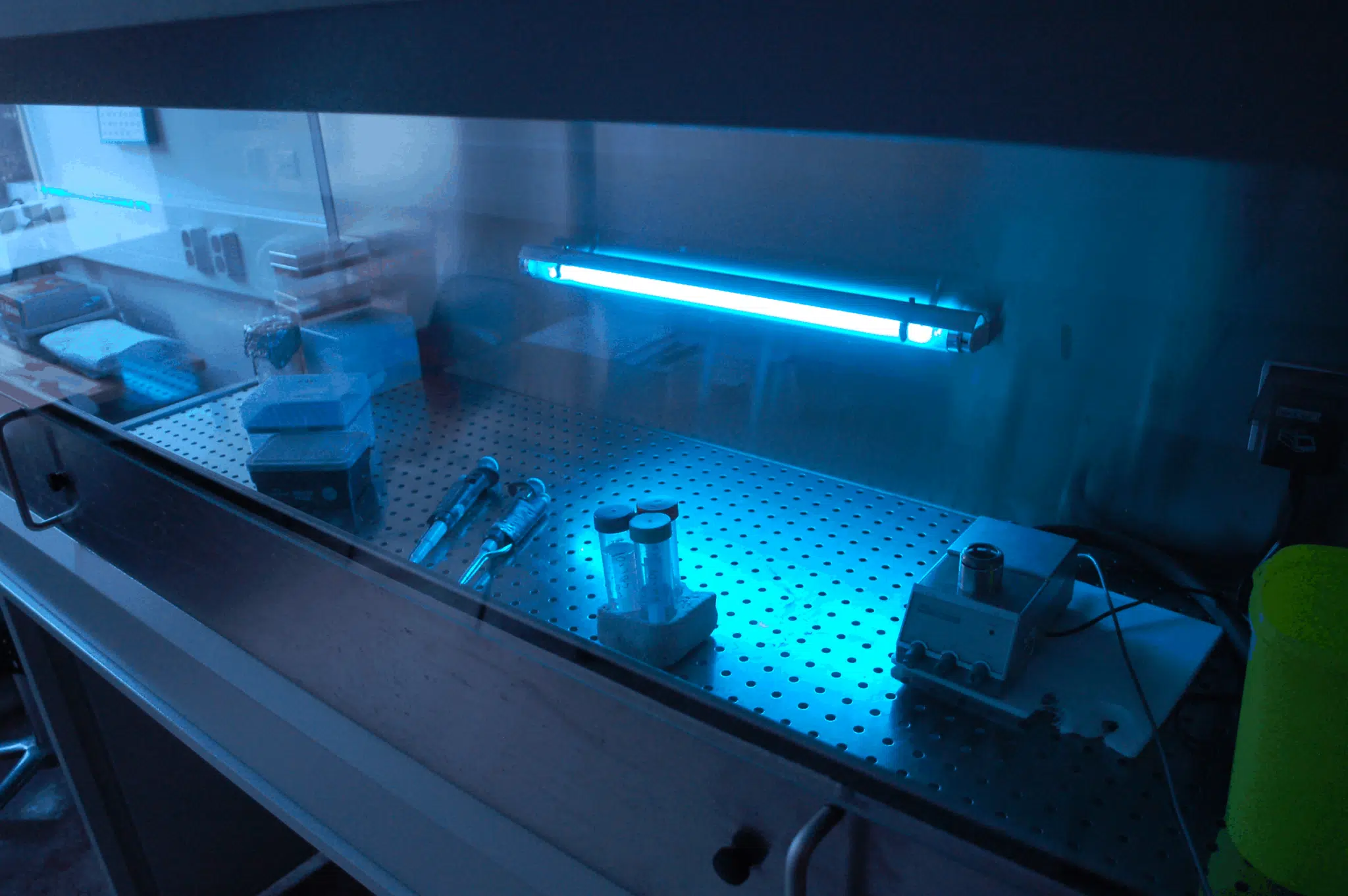Much UVC Light: A Game-Changer in the Battle Versus Airborne Pathogens
In the ever-evolving fight versus air-borne microorganisms, the development of far UVC light has stimulated significant rate of interest and capacity. This innovative technology, utilizing a specific variety of ultraviolet light, holds the pledge of changing how we fight the spread of damaging microorganisms in numerous atmospheres. Its distinct buildings and prospective applications have garnered interest from scientists, scientists, and public health specialists alike. What precisely is much UVC light, and how does it function? In this discussion, we will certainly look into the science behind this game-changing modern technology, explore its advantages, and examine its future effects in the ongoing battle against air-borne pathogens.
The Scientific Research Behind Far UVC Light
The scientific principles underlying making use of Far UVC light as a prospective remedy for combating airborne microorganisms are both detailed and promising. Far UVC light describes a specific variety of ultraviolet (UV) light wavelengths, typically between 207 and 222 nanometers, which have actually been found to successfully eliminate or inactivate bacteria such as viruses and microorganisms. Unlike conventional UVC light, which has a much shorter wavelength and is recognized for its germicidal residential properties but can also hurt human skin and eyes, Far UVC light has actually been revealed to be safe for human direct exposure.
The vital system behind the performance of Far UVC light lies in its ability to permeate and ruin the hereditary product of microbes, including their DNA and RNA. When exposed to Far UVC light, the hereditary product undertakes a process called photodimerization, where adjacent bases in the DNA or RNA molecule bind together, avoiding replication and making the bacterium not able to cause or reproduce infection.

Just How Much UVC Light Functions
Far UVC light runs by making use of particular ultraviolet wavelengths to efficiently neutralize bacteria and avoid their duplication, making it an encouraging service for combating airborne pathogens. Unlike conventional UVC light, which is harmful to human skin and eyes, far UVC light has much shorter wavelengths, commonly in the series of 207 to 222 nanometers (nm), that do not permeate the outer layer of the skin or the tear layer of the eye. This makes it risk-free for continual human direct exposure, while still being lethal to infections and bacteria.
The performance of much UVC light lies in its capacity to ruin the dna and pass through and RNA of bacteria. When subjected to far UVC light, the hereditary product of these microorganisms is harmed, making them incapable to replicate and infect cells. Furthermore, research studies have shown that much UVC light can efficiently suspend airborne viruses, such as flu, measles, and coronaviruses, consisting of SARS-CoV-2, the infection responsible for COVID-19.
In addition, far UVC light is likewise qualified of decontaminating surfaces and items in an encased space. By setting up much UVC lighting fixtures or making use of portable far UVC light gadgets, it is possible to continually sanitize the air and surface areas, minimizing the risk of air-borne transmission of microorganisms.
Advantages of Far UVC Light
Using far UVC light offers a variety of significant benefits in combating air-borne pathogens and guaranteeing a more secure atmosphere for continual human direct exposure. Among the key benefits of far UVC light is its capacity to properly counteract numerous sorts of harmful microorganisms, viruses, and fungi without causing harm to human beings. Unlike conventional UV light, which can be harmful to human skin and eyes, far UVC light has a shorter wavelength that allows it to target and ruin virus while posturing very little threat to human health.

Additionally, far UVC light is much more secure for the environment contrasted to standard disinfection approaches. Chemical disinfectants usually include unsafe active ingredients that can have negative effect on the setting. Much UVC light, on the various other hand, does not produce any damaging by-products or deposits, making it a more lasting and environmentally friendly service.
Applications of Far UVC Light
Far UVC light has actually shown to be effective in eliminating airborne virus such as viruses, fungis, and bacteria. Unlike standard UV learn the facts here now light, far UVC light is secure for human direct exposure, making it ideal for continuous usage in public spaces such as workplaces, schools, and medical facilities.
An additional application of far UVC light is in the medical care industry. It can be used to decontaminate healthcare facility areas, operating movie theaters, and clinical tools, decreasing the threat of healthcare-associated infections. In addition, much UVC light can be incorporated into a/c systems to detoxify the air circulating in buildings, offering an included layer of protection against airborne microorganisms.
Moreover, much UVC light can be utilized in the food industry to avoid foodborne illnesses. It can be used to disinfect food processing facilities, killing germs and other bacteria that may pollute food.
Future Ramifications of Far UVC Light
The possible future applications of much UVC light are substantial and hold assurance for numerous sectors and fields. Among the vital locations where much UVC light might have a substantial effect remains in health care settings. Healthcare facilities and centers might utilize far UVC light to decontaminate person areas, running movie theaters, and waiting areas, decreasing the risk of healthcare-associated infections - far-uvc. This could possibly bring about enhanced individual results and reduced healthcare costs.
Furthermore, making use of far UVC light in public spaces such as airports, train terminals, and buying malls could assist control the spread of air-borne microorganisms. By continually sanitizing these locations, the danger of transmission could be dramatically minimized, offering a safer setting for individuals.
An additional potential application of much UVC light is in the food market. Much UVC light could be made use of to disinfect food prep work surfaces, packaging products, and storage locations. This can help protect against the contamination of food and decrease the event of foodborne illnesses.
In addition, far UVC light can be utilized in cooling and heating systems to sanitize the air flowing in buildings. This can be particularly helpful in crowded areas such as workplaces, schools, and cinemas, where the look at here now threat of air-borne transmission is greater.
Final Thought
In conclusion, far UVC light has emerged as a game-changer in the fight against air-borne virus. From public rooms to medical care setups, much UVC light offers various benefits in decreasing the transmission of illness.
Far UVC light refers to a particular range of ultraviolet (UV) light wavelengths, usually between 207 and 222 nanometers, which have been found to properly eliminate or suspend bacteria such as germs and viruses. far-uvc. Unlike conventional UVC light, which has a shorter wavelength and is recognized for its germicidal residential or commercial properties but can also harm human skin and eyes, Far UVC light has been revealed to be secure for human direct exposure
Unlike standard UVC this contact form light, which is unsafe to human skin and eyes, much UVC light has shorter wavelengths, generally in the array of 207 to 222 nanometers (nm), that do not pass through the outer layer of the skin or the tear layer of the eye. Unlike conventional UV light, which can be unsafe to human skin and eyes, much UVC light has a shorter wavelength that permits it to target and destroy virus while presenting minimal threat to human health and wellness.
Unlike conventional UV light, much UVC light is risk-free for human direct exposure, making it appropriate for continuous usage in public spaces such as medical facilities, colleges, and offices.
Comments on “Far-UVC UV Sanitizers: The Cutting-Edge Option for Reliable Sanitation”